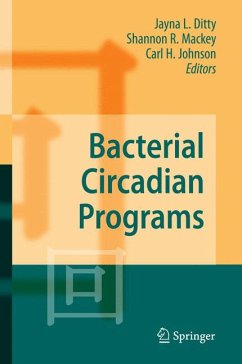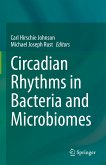This book addresses multiple aspects of bacterial circadian programs: the history and background of the cyanobacteria and circadian rhythms in microorganisms, the molecular basis, structure, and evolution of the circadian clock, entrainment of the oscillator with the environment and the control of downstream processes by the clock, the demonstration of adaptive significance and the prokaryotic clock's remarkable stability, and mathematical and synthetic oscillator models for clock function.
Experts in the field provide a timely and comprehensive review and a stepping-stone for future work on this amazing group of microorganisms and timing.
Dieser Download kann aus rechtlichen Gründen nur mit Rechnungsadresse in A, B, BG, CY, CZ, D, DK, EW, E, FIN, F, GR, HR, H, IRL, I, LT, L, LR, M, NL, PL, P, R, S, SLO, SK ausgeliefert werden.









